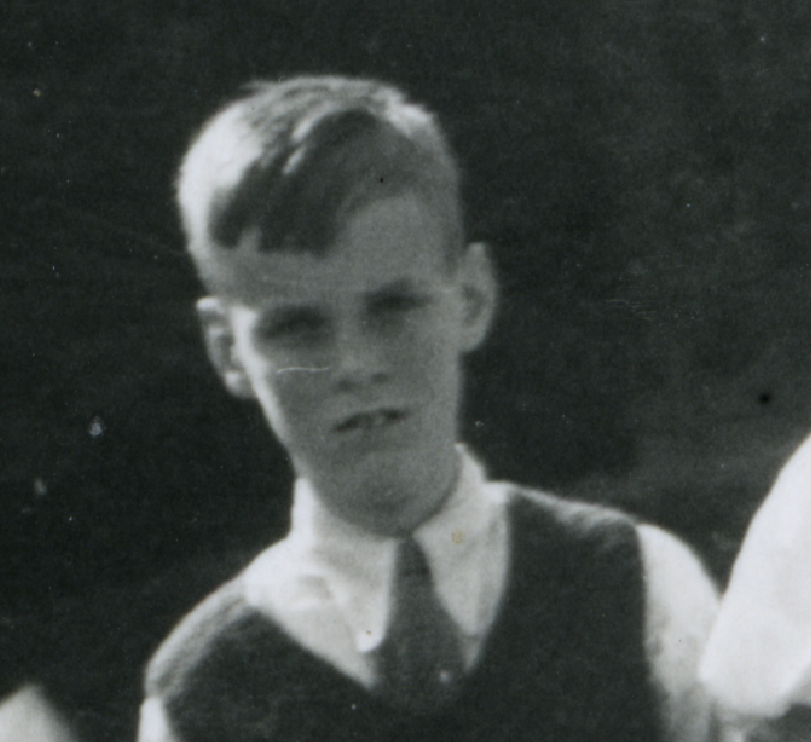Henk Schultink
Henk Schultink can be seen with Anne Frank in some of the photos.
Hendrik (Henk) Schultink can be seen together with Anne Frank in some photos taken in 1938 in Laren near Het Kinderhuisje children's home. He had no memories of her and said: "I am still amazed that I ever met Anne Frank".[1]
He was the eldest son of an artillery captain. In 1937, he was kept back in the first year of a grammar school in The Hague. That summer he went for the first time to Het Kinderhuisje children's home in Laren. He enjoyed it so much that he went again the following year, but was disappointed. He found it childish there.[1] On 24 November 1938, Henk, his younger brother Robbie and their mother sent a postcard with a drawing of bowling cats to the residents of Het Kinderhuisje.[2]
After grammar school he studied language and literature in Leiden. He graduated cum laude in 1951.[3] In 1961 he obtained his doctorate with a thesis on 'the morphological valence of the infinitive adjective in modern Dutch'.[4] From 1962 to 1986 he was Professor of General Linguistics in Utrecht.[5]
Source personal data.[6] Address: Sadéestraat 17, THe Hague (1934).[7]
Footnotes
- a, b E-mail H. Schultink aan Gertjan Broek (Anne Frank Stichting), 18 maart 2014.
- ^ Privébezit M.L. Folmer: Ansichtkaart met opschrift, d.d. 24 november 1938.
- ^ “Academische examens”, Algemeen Handelsblad, 13 januari 1951.
- ^ H. Schultink, De morfologische valentie van het ongelede adjectief in modern Nederlands, Den Haag: Van Goor & Zn, 1962.
- ^ Thijs Pollmann, “Ter introductie”, in: H. Schultink, Het Nederlands in 2002, 2002, Utrecht: Bureau Studium Generale, Universiteit Utrecht, p. 3-6, daar 4.
- ^ Haags Gemeentearchief, Den Haag, Dienst Bevolkingsregister Den Haag, Gezinskaarten 1913-1939: Gezinskaart J.F. Schultink (1890); Catalogus Professorum' op: https://profs.library.uu.nl/index.php/profrec/getprofdata/1878/47/65/0 (geraadpleegd 2 maart 2018).
- ^ Haags Gemeentearchief, Dienst Bevolkingsregister Den Haag, Gezinskaarten 1913-1939: Gezinskaart J.F. Schultink (1890).
